[E-Health #4] All about medical regulation


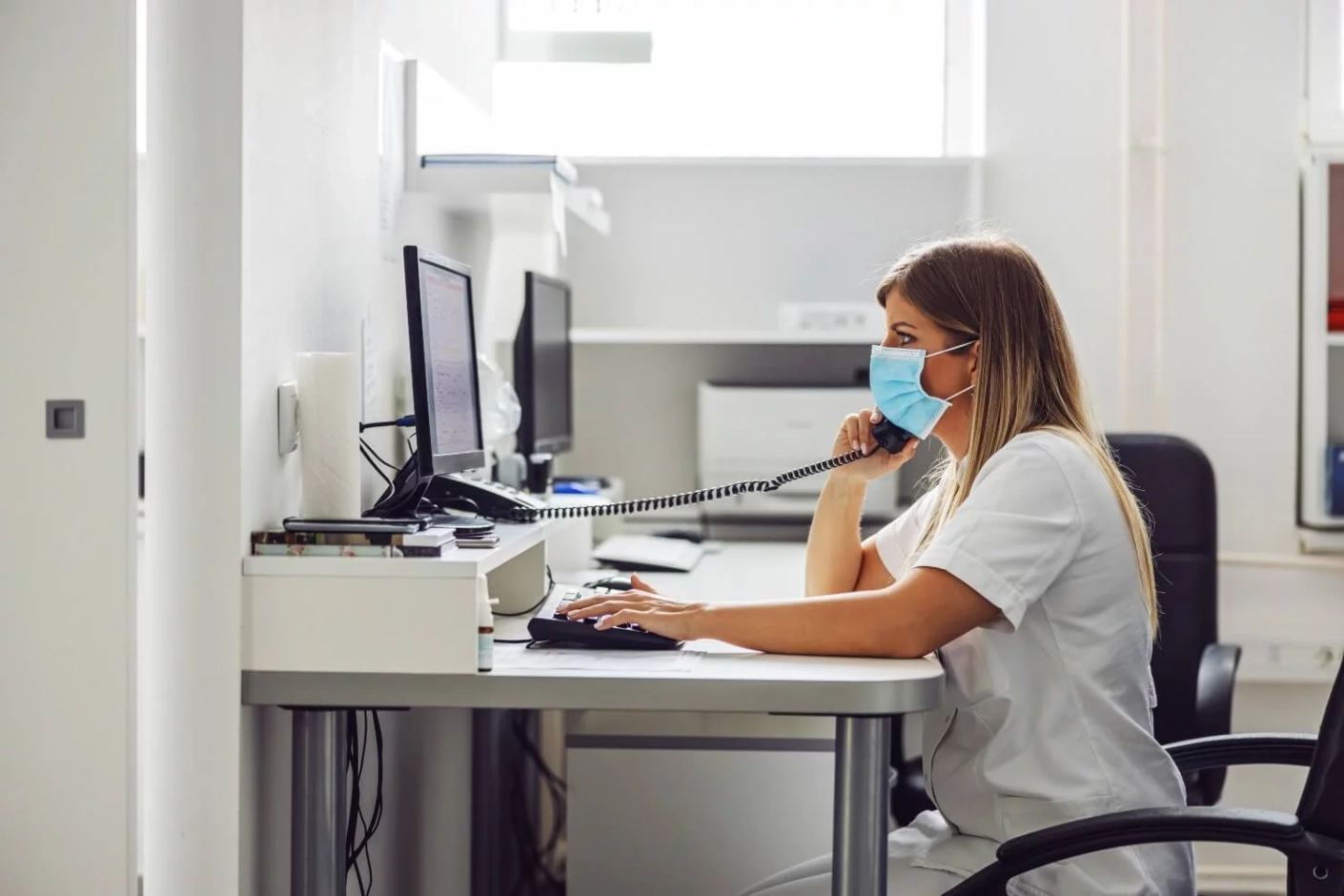
For our last “e-health appointment”, we will present you the medical regulation. Established in the 70s, this medical act occurs as soon as a person contacts the emergency service. By calling the emergency service, the person will automatically land into a medical regulation center, whose goal will be to gather all the information about the urgent situation to refer it to the appropriate health personnel. Today, it is the most realized telemedicine act in France. You will find in this article everything you need to know about the medical regulation, and you will discover the value of visual assistance in performing this procedure.
Medical regulation is a medical act performed over the phone by a regulating physician in the center call dedicated to emergencies. Those centers ensure an ongoing service 24h/24 in order to listen and answer to urgent situations. This act is a part of urgent medicine, but also of telemedicine.
The medical regulation has a goal to determine, to initiate and to ensure the best medical response in the best deadlines. The goal being, provide the patient with quick access to the right care. On a daily basis, the health care personnel optimizes hospital resources and contributes to a more structured healthcare offer in a given health territory.
The center of medical regulation is formed of regulating physicians and a regulating assistant. They both play a major role in the management of emergency calls.
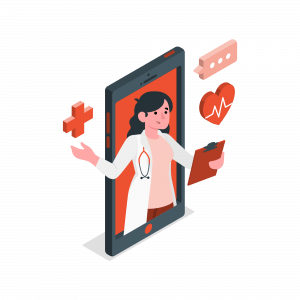
The regulating assistant is the first connection of a person who calls the emergency service. He is in charge of receiving all incoming calls. When the numbers of incoming calls at the same time are too high, he has the responsibility to prioritize the management of cases. The main mission of the assistant is to collect as much information as possible about the location and the emergency situation before transmitting the call to the regulating physician. Then he is responsible for ensuring the implementation of the physician’s decisions and monitoring the progress of the interventions.
According to the situations he is faced with, the assistant may also be required to:
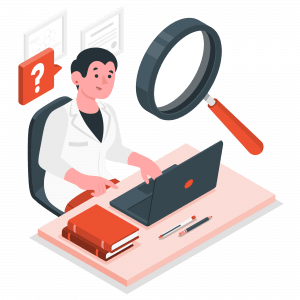
Once the information is gathered by the assistant, the regulating physician takes over the call. He rephrases, complete and validate with the caller all the information and searches for some possible additional information. The goal being to establish a diagnosis and make a decision adapted to the situation. The physician is charged to inform the patient on his health status, hypothesis formulated, the possible answers, the conditions of care, the timeframe for implementation and specifies the expected benefits and possible risks. The physician’s goal is to get the patient or family member to agree with the medical decision.
The act of medical regulation is organized according to different stages, shared between the missions of the medical regulation assistant and those of the regulating physician:
First step – The call reception by the medical regulating assisted and the gathering of information
When he receives a call, the medical regulating assistant will personally present himself, then start a listening stage of the caller. He will then enter the questioning stage in order to clarify the reasons for the call. The goal being gathering of information about the urgent situation and location.
Step 2 – Transfer of the call to the regulating physician
Once the key informations are gathered, the assistant transmits it to the regulating physician. He completes the information and then establishes one or more hypotheses with regard to the situation. He then assesses the risks and benefits of the various possible treatments.
Step 3 – Decision making by the regulating physician
Once his medical decision is taken, the regulating physician informs the caller. He then makes sure that the caller understands and accepts the medical decision.
Different types of answers exist; some have been surveyed by the French High authority of Health in a report about the “Procedures for handling a call for unscheduled care in medical regulation“. Once the information is gathered, the assistant transmits them to the regulating physician. That will complete the information to establish more hypotheses in regard to the situation. He then evaluates the risks and benefits of the different medical decisions.
Step 4 – Implementing the decision and interventions
Once the regulating physician took and validated a decision, the assistant ensured its implementation and the follow-up of the intervention.
Step 5 – Orientation and preparation of the patients reception
The medical regulating assistant prepares the reception in the chosen institutions and supervises the means of transportation. He also ensures that the patient’s admission goes well. Once the patient is taken care of, it’s the emergency medical services that take over.

A document shared by “Samu-Urgences France” in 2018 highlights that of the 39 million actual emergency calls made by the French population each year to the Emergency Medical Service and the fire department, 36 million (93%) concern the Emergency Medical Service. However, at the medical regulation level, one of the first difficulties is to get the right picture of the situation presented over the phone by the person in an urgent situation. Indeed, the callers are often in stressful situations and have a hard time describing the situation. In this context the visual assistance appeared to be a precious tool to help the emergency service.
The visual assistance is a real-time video communication that is similar to videoconferencing. In the context of medical regulation, it allows the assistant or the regulating physician to access visually and remotely the situation of a patient with the camera of his phone.
Here is a concrete example of the use of visual assistance for medical regulation:
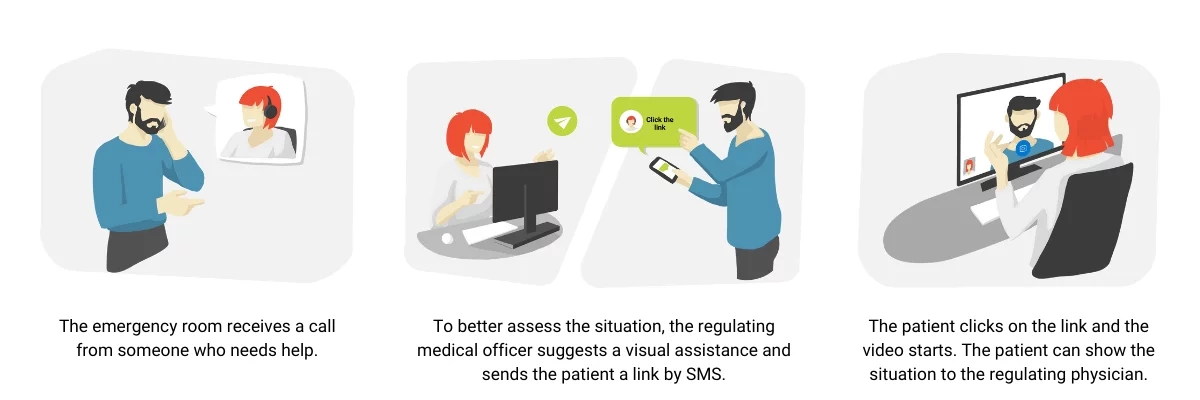
A patient contacts the emergency service for an urgent situation. The medical regulating assistant makes a first overview, gathers the necessary information, then the regulating physician takes over. In some cases, the physician can decide to do a visual assistance with the patient. The use of the video assistance is not systematic and is up to the judgment of the physician or the assistant. If the patient agrees, then the physician will send him a securized link via SMS. In just one click, the visual assistance starts and the patient with his phone camera can show the situation. It may allow the agent to improve the medical care of the patient, to better orient them, to geolocate them, to reassure them, etc.
Visual assistance does not replace the traditional telephone exchange between the assistant/physician and the patient. Rather, this device is a complement. Moreover, it is not intended to be used for every call. On the contrary, it is generally used punctually when the situation requires it. The video assistance allows to:
Furthermore, in 2021, a study was conducted to determine whether video assistance could improve the quality of cardiopulmonary resuscitation performed by bystanders during cardiac arrest. The primary endpoint was improved compressions (hand position, compression rate, compression depth, etc.). The results of the study show that video assistance helped physicians to refocus people performing cardiopulmonary resuscitation (CPR). In conclusion, the use of video in this type of situation improves CPR performance.
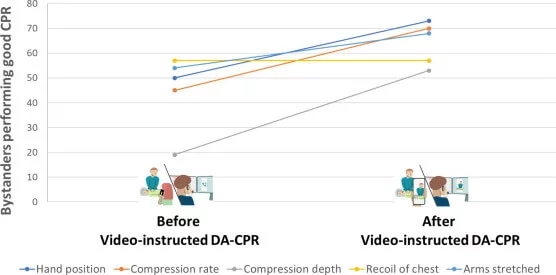
There are many video conferencing or video-assistance solutions on the market. Nevertheless, we advise you to turn to a secure solution adapted to the e-health use case.
For starters, the solution chosen will have to conform to the General Data Protection Regulation (GDPR). Secondly, given the context of medical regulation, it will have to host personal health data in a suitable storage environment.
From a solution point of view, we advise you to choose a 100% web-based solution, which does not require any installation or application download. Medical regulation is an act that is quick and simple. Therefore, choose a solution that will allow you to visually assess the situation via a simple click on a link.
Another important point is: Internet connection. To be realized, visual assistance requires a good internet connection. However, sometimes the connection is bad and video communication is difficult. To overcome this problem, some solutions give you the possibility to switch to “photo” mode. This means that the caller can take pictures and send them to you even when the network does not allow for video communication.
Other collaborative features can also be interesting for this use case:

Did you like this article? Do not hesitate to discover the three other articles of the series on teleconsultation, tele-expertise and telecare.
Are you looking for a video solution for medical regulation? Discover Apizee Diag, our secure French visual assistance solution. Very easy to use, it does not require any installation or downloading of applications, software or plug-ins. Whether you choose our turnkey solution or an API to integrate, it is very quick to deploy. Contact us to learn more or to receive a demo of the solution.
Read also:
Explore key findings from the Genesys State of Customer Experience report. Learn how AI, omnichannel strategies, and video chat are transforming CX and enhancing customer satisf...
The State of Customer Experience report by Genesys : Key Insights and Trends
27 Mar 2025
Despite AI and automation, customers still prefer to speak to a human for support. Discover why human interaction remains essential for great customer service.
Why Customers Still Want to Speak to a Human in Customer Service
17 Mar 2025
Discover the top customer experience influencers in Europe, shaping the future of CX and customer service.
Top 100 Customer Experience Influencers to follow
10 Mar 2025
Interested in our solutions?